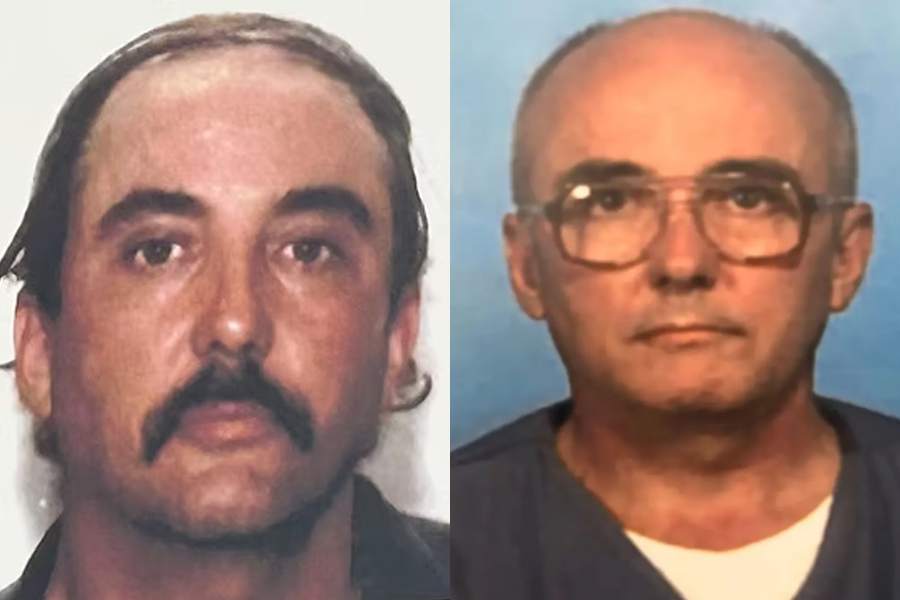
KINGS PARK, NY – Nearly three decades after 69-year-old grandmother Ann Lustig was found murdered in Calverton, Suffolk County investigators say cutting-edge DNA technology has finally identified her killer and linked him to a second violent attack on an elderly patient from the same psychiatric facility.
Lustig, a Northport resident living in a group home near Main Street, disappeared in February 1997 after traveling to Kings Park State Psychiatric Hospital for an appointment. She took a cab to the hospital but never made it back home. The next day, hunters discovered her body in woods off Fresh Pond Road/Route 25 in Calverton, miles away from where she was last seen.
The Suffolk County Medical Examiner determined she had been beaten and strangled, ruling the case a homicide caused by blunt force trauma and neck compression. At the time, detectives collected physical evidence and conducted an extensive investigation, but with 1990s forensic tools they were unable to identify a suspect. The case was eventually classified as a cold case.
Lustig’s murder wasn’t the only unsolved crime connected to Kings Park.
In December 1996, an 82-year-old patient from the same psychiatric facility reported that she had been abducted while waiting for a ride near the hospital. According to investigators, a man forced her into a car, drove her to an unknown residence, raped her and then brought her back to the facility, where she reported the assault to staff. She survived the attack but died years later without ever knowing who attacked her.
Detectives at the time believed there were strong similarities between the rape and the later homicide; the same facility, elderly psychiatric patients, and similar circumstances around transportation, but the available forensic techniques could not definitively tie the two cases together.
Decades later, under Suffolk County District Attorney Ray Tierney, the county formed a Cold Case Task Force in the wake of renewed attention on unsolved cases, including the Gilgo Beach investigation. The Lustig homicide was among the early files to be re-examined.
Crucially, investigators had preserved physical evidence from both the 1996 sexual assault and the 1997 homicide: swabs from the victims, clothing, and fibers recovered from the scenes. Among the items re-tested was Lustig’s sweatshirt, which contained what technicians described as a faint “smudge” of biological material – too limited to yield a full profile with earlier methods.
Advances in DNA technology introduced around 2024 allowed forensic scientists to re-analyze that material. Late that year, new testing indicated that DNA from the Lustig case was forensically linked to the rape of the 82-year-old patient. Further testing in early 2025 on Lustig’s clothing produced a complete DNA profile suitable for comparison in national databases.
In addition to the DNA, crime-scene technicians had recovered black and green fibers on both victims: black fibers consistent with automobile floor mats and green fibers consistent with carpeting in a residence. The matching fiber evidence supported the conclusion that the same offender had contact with both women, in both a vehicle and a home environment.
The new DNA profile was uploaded and searched against felon databases. Investigators say it returned a match to Steven Briecke, formerly of West Islip, a convicted felon and registered sex offender.
Briecke’s criminal history stretches back decades. Public reporting indicates he had prior burglary and assault convictions in New York, a Florida conviction for sexually assaulting a child, and multiple arrests for public lewdness. At the time of Lustig’s murder, he was on parole for an assault conviction, which is why his DNA had been entered into law-enforcement databases in the first place.
Retired detectives who worked the original investigation told NBC New York that Briecke had surfaced as a person of interest in the late 1990s, after a witness reported seeing his van near the wooded area where Lustig’s body was found. Without DNA or other conclusive evidence at the time, authorities were unable to bring charges, and the case stalled.
With the new DNA results, the Cold Case Task Force concluded that Briecke was responsible for both the 1997 rape and murder of Lustig and the December 1996 rape of the 82-year-old patient from Kings Park State Psychiatric Hospital.
Despite finally putting a name to the crimes, prosecutors will never bring the case to a jury. Briecke died in 2014 at age 56. Officials have said that, had he been alive, he would have faced charges for Lustig’s killing and the earlier sexual assault.
For Lustig’s family, her children and grandson, the announcement closes a question that lingered for nearly three decades but also reopens painful memories of a winter day in 1997 when a beloved grandmother never came home. Local coverage describes them expressing both grief and gratitude: grief that the loss is permanent, and gratitude that investigators persisted long enough for science to finally catch up with the evidence they had saved.
For Suffolk County, the Lustig investigation has become a case study in how cold-case work has changed. Evidence that once seemed too degraded to be useful, a smudge on a sweatshirt, trace fibers on clothing, can now be amplified, analyzed and compared at a level of detail that was impossible in the 1990s.
Officials say the same Cold Case Task Force model used here will continue to be applied to other unsolved homicides and sexual assaults, particularly where evidence was carefully preserved but not fully exploited by older technology. The Lustig case underscores the message that even decades-old crimes can still be solved when persisted investigative work and modern forensics intersect.


